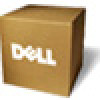Dell Broadcom NetXtreme Family of Adapters Broadcom NetXtreme II Network Adapt - Page 53
Supported FC/FCoE Devices, Unloading FCoE Driver, Configuring the FCoE Driver
 |
View all Dell Broadcom NetXtreme Family of Adapters manuals
Add to My Manuals
Save this manual to your list of manuals |
Page 53 highlights
Solaris Driver Software: Broadcom NetXtreme II Network Adapter User Guide Support does not exist for NPIV in the Solaris 10 Update 9. Some of the fcinfo(1M) options, which are available in Solaris 11, are not be available in Solaris 10, Update 9. For more information, read the man page fcinfo(1M). brcmfcoeadm(1M) feature is supported in both Solaris 10 Update 9 and Solaris 11. However, when "delete-fcoe-port" is complete, you need to issue the following two commands to unload the bnxef driver before you can re-issue "createfcoe-port". There is a reaper thread in Solaris 11 that aggressively looks for unused driver modules and unloads the driver. That thread does not exist in Solaris 10 Update 9. Therefore, you have to explicitly look for the driver module ID of the bnxef driver by issuing the following command. # modinfo | grep bnxef 249 fffffffff8d63000 486b8 54 1 bnxef (6.4.13) Then issue the modunload command to unload the module before "create-fcoe-port" is issued to create a new FCoE port. # modunload -i 249 Any time "create-fcoe-port" needs to be issued, the driver must be unloaded, if it is already loaded. If not, the "create-fcoeport" will fail indicating the driver is busy. This is true when you have two or more instances of bnxef loaded, in which case, you should first delete all FCoE ports and then unload the driver. Unloading will occur only when all the instances are deleted. Supported FC/FCoE Devices The bnxef Broadcom 10 Gb FCoE driver works with all the major FCoE fabric devices. It is also compatible with all known FC disk devices and tape devices working through the FCoE fabric. Unloading FCoE Driver Delete all FCoE ports created across the various bnxe instances. 1. Delete all the NPIV ports created before deleting FCoE ports. 2. brcmfcoeadm delete-fcoe-port bnxe 3. modinfo | grep bnxef The first column for the above command will give the module ID for the bnxef driver. 4. modunload -i The procedure should unload the driver. However, if there are many instances of the FCoE ports created, all the FCoE ports must be deleted before the unload can be attempted. Configuring the FCoE Driver The bnxef driver can be configured via the bnxef.conf file installed under /kernel/drv. When this config file is modified, the system must be either rebooted or use the update_drv(1M) command to update the driver configuration. The details of the configurations parameters are detailed in the bnxef(7D) man page. The default parameters should work for all conditions. Please read all Restrictions and Disclaimers. Back to Contents Page file:///T|/htdocs/NETWORK/BroadCom/71921/NetXtremeII/en/solaris.htm[9/26/2012 3:28:52 PM]















